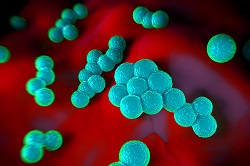Wake up, wipe out: How oxygen can help take down antiobiotic-resistant bacteria
‘Antibiotics can only kill bacteria when they are actively growing and dividing,’ explains Thomas K. Wood, professor of chemical engineering and Biotechnology Endowed Chair at Penn State University. ‘But, environmental stress factors often turn on a bacterial mechanism that creates a toxin that makes the cell dormant and therefore antibiotic resistant.’ Such biofilm-forming bacteria are therefore very difficult to kill. A relevant example is that of some bacteria living in the gastrointestinal track. Whilst bile can technically kill them, these bacteria can defend themselves by producing a self-toxin (protein) that makes them go dormant in its presence. As soon as the bile is gone, the bacteria produce another protein that destroys the former, and comes back to life. Finding a way to stop the production of this toxin was key to a research effort supported in part by the EU-funded BIO-NMR (NMR for Structural Biology) project – a completed project that pooled European resources in Nuclear Magnetic Resonance Spectroscopy (NMR). The international team, which was also supported by Spain’s MINECO project and the Army Research Laboratory, actually managed to characterise the first toxin antitoxin system in a biofilm, which also happens to be oxygen-dependent. Researchers at the NMR Laboratory, University of Barcelona, proceeded to this characterisation at the molecular and atomic level. Focusing on E. Coli bacterium, they found that the antitoxin’s structure has channels that are just large enough for oxygen to pass through and actually relies on it. Its Hha-TomB toxin-antitoxin system implies that, in order to wake up the bacterium, the antitoxin needs to effectively oxidise the toxin. In other words, an additional supply of oxygen could be enough to wake up the bacteria and make them sensitive to antibiotics. The researchers found that only 10 % oxygen is sufficient to wake up the bacteria on the edges of the biofilm. This could result in breaking up the biofilm and dispersing it, leaving the bacteria inside unprotected. Wood points to the importance of this result for the development of better antimicrobials. ‘If we understand the toxin-antitoxin systems at a molecular or atomic level, we can make better antimicrobials,’ he said. ‘I would argue that the toxin antitoxin systems are fundamental to the physiology of all bacteria. We hope this will give us insight into how they survive the antibiotics.’ For more information, please see: project website
Countries
Italy



